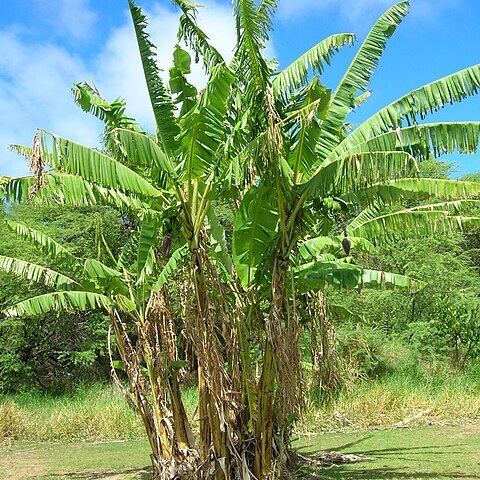Perennial stoloniferous herbs; pseudostem only slightly swollen basally. Leaf sheaths tightly convolute. Inflorescence pendulous or erect; bracts convolute or ± imbricate in bud; flowers and bracts separately inserted on rachis, usually falling by abscission, usually deciduous. Perianth usually tubular, split to base on one side, 5-toothed apically; one segment free, inserted within and opposite united segments, longer than wide. Pollen grains with finely granular surface. Seeds irregularly globose, lenticular or cylindrical.
Underground stems (corms) rhizomatous, short, pseudostems clustered, [0.5--]3--10 m. Leaf blades unlobed (older leaves often split to midrib), oblong or oblong-elliptic, [0.6--]2--3 ´ 0.3--0.6 m. Inflorescences pendent [erect]; pistillate flowers crowded, numerous; bracts of staminate flowers imbricate, forming budlike mass at apex of inflorescence. Berries cylindric, usually ± curved, weakly angled in cross section, [10--]20--35 cm, soft, fleshy. x = 10, 11.
Perennial giant herbs from a branching corm-like rhizome; each shoot dying after flowering. Leaves very large; sheaths imbricate, forming a pseudostem up to 4 m. high; lamina oblong.

